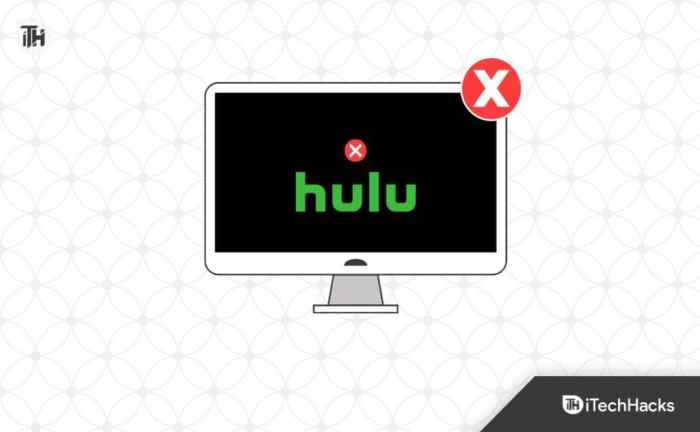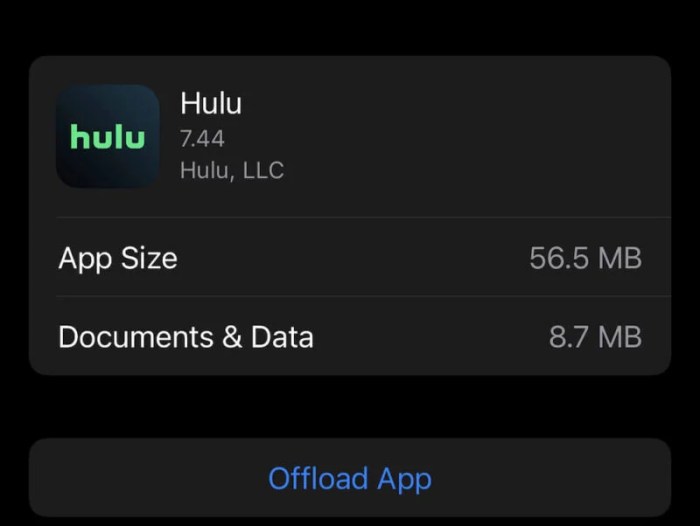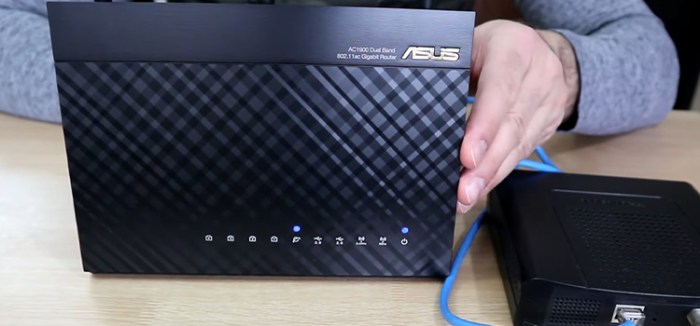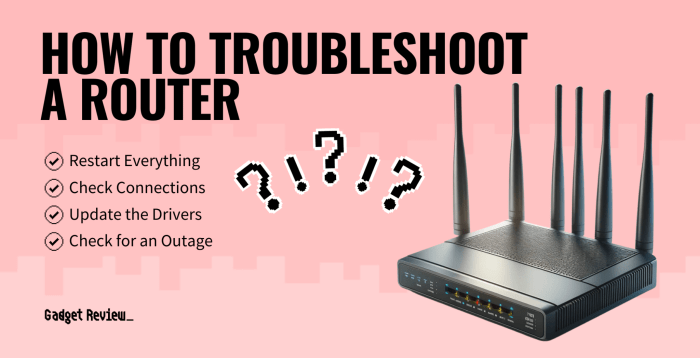Hulu App No Sound iPhone is a frustrating problem, but don’t worry! This comprehensive guide delves into the various potential causes and provides actionable solutions to get your Hulu streaming back on track. We’ll explore everything from simple troubleshooting steps to examining app conflicts and even checking your device’s hardware.
From software glitches to network hiccups, we’ll cover a wide range of possibilities. This guide aims to equip you with the knowledge and tools to pinpoint the root cause and restore your Hulu viewing experience. Let’s dive in!
Troubleshooting iPhone Audio Issues with Hulu
Hulu, a popular streaming service, can sometimes experience audio problems on iPhones. This often results in frustrating silences or distorted sound while attempting to enjoy your favorite shows and movies. This guide provides a comprehensive approach to diagnosing and resolving these issues, covering potential software, app, network, and even hardware-related causes.This comprehensive guide will walk you through various troubleshooting steps, from basic checks to more advanced techniques, ensuring a smooth and sound Hulu experience on your iPhone.
Identifying the root cause is key to a swift resolution. Common error messages and symptoms will be explored, along with explanations of potential underlying problems.
Common Symptoms of No Sound on Hulu
Users often report experiencing a complete lack of sound, or intermittent audio issues, when using the Hulu app on their iPhone. Symptoms can include no sound at all during playback, muted audio, distorted sound, or audio that abruptly cuts in and out. These issues can be frustrating, disrupting the viewing experience and leading to considerable inconvenience.
Potential Causes of No Sound Issues
Several factors can contribute to audio problems with the Hulu app on iPhones. These include software glitches within the Hulu app itself, conflicts with other apps on your device, network connectivity problems, or even potential hardware issues.
Troubleshooting Steps
A systematic approach is crucial to resolving iPhone audio issues. Here are some troubleshooting steps, ranging from simple checks to more complex solutions:
- Check iPhone Volume and Mute Settings: Ensure the volume on your iPhone is turned up and that the device’s mute switch is not activated. This is often the first and simplest troubleshooting step.
- Restart the Hulu App: Sometimes, a simple app restart can resolve minor glitches. Close the Hulu app and reopen it to see if the sound returns.
- Restart your iPhone: A full device restart can often resolve a variety of software-related problems. This may be necessary if the sound issue persists after restarting the Hulu app.
- Check Network Connection: Poor or unstable network connections can lead to audio issues. Ensure your iPhone has a stable Wi-Fi or cellular connection. Try using Wi-Fi if you are using cellular data.
- Update Hulu App and iOS: Outdated apps or operating systems can cause compatibility problems. Ensure the Hulu app and your iOS are up to date to prevent potential audio issues.
- Clear Hulu App Cache and Data: Accumulated cache data from the Hulu app can sometimes cause problems. Clearing the app’s cache and data may resolve audio issues.
- Check for App Conflicts: Sometimes, another app on your iPhone might be interfering with the Hulu app’s audio functionality. Try temporarily disabling other apps to see if the sound issue resolves.
- Contact Hulu Support: If all other troubleshooting steps fail, contact Hulu support for further assistance. They may have specific troubleshooting steps or be able to identify any broader service issues.
Troubleshooting Effectiveness Comparison
The table below provides a comparison of different troubleshooting steps and their typical effectiveness:
| Step | Description | Expected Outcome | Success Rate |
|---|---|---|---|
| Check iPhone Volume & Mute | Ensure volume is up and mute is off | Sound restored if muted | High |
| Restart Hulu App | Close and reopen the Hulu app | Sound restored if minor glitch | Medium |
| Restart iPhone | Completely restart the device | Resolve various software issues | High |
| Check Network Connection | Ensure stable Wi-Fi or cellular data | Sound restored if network is stable | Medium-High |
| Update Apps | Update Hulu app and iOS | Resolve compatibility issues | Medium |
| Clear App Cache/Data | Clear Hulu app cache and data | Resolve cache-related problems | Medium |
| Check for App Conflicts | Temporarily disable other apps | Sound restored if other apps are interfering | Low-Medium |
| Contact Hulu Support | Seek assistance from Hulu support | Specific troubleshooting steps or service issues identification | High (if other steps fail) |
Hulu App-Specific Sound Problems
The Hulu app, while generally reliable, can sometimes experience audio issues on iPhones. These problems can stem from various factors unique to the app’s operation and its interaction with other software on your device. Understanding these specific issues can help you pinpoint the cause and find a solution.App updates, version incompatibility, and conflicts with other installed applications can all contribute to audio problems.
My iPhone’s Hulu app is acting up again – no sound! This is seriously frustrating, especially when trying to watch a new show. I’ve tried the usual troubleshooting steps, but nothing seems to work. Maybe I should try making a dinosaur tail like the ones in the tutorial on Make a Dinosaur Tail instead. At least that would be a fun craft project! Hopefully, a restart will fix the Hulu sound issue though, because I need my shows!
This article will explore these potential issues, offering troubleshooting steps to help isolate the problem.
Common Hulu App Sound Problems
The Hulu app, like any software, can encounter specific audio problems. These issues often stem from the app’s interaction with the iPhone’s operating system and other installed applications. Some common problems include:
- Incompatibility with iOS versions: A newly released Hulu app version might not be fully compatible with an older iOS version. This can lead to audio playback issues. For example, a new version of the app might require a specific iOS version to function properly. If you are using an older iOS version, you may experience sound problems with newer Hulu app versions.
An incompatibility between the Hulu app and the iOS version can also affect audio output.
- Conflicts with other apps: Certain apps might interfere with the Hulu app’s audio output. For instance, if another app is using the audio hardware or changing audio settings, the Hulu app might not be able to play sound correctly. This is particularly true for apps that use background audio, such as music players or podcasts.
- Corrupted app data: Occasionally, the Hulu app’s internal data can become corrupted, which may manifest as sound problems. This is less common but could still affect audio output. A forced restart or reinstalling the app can often solve this problem. This issue could affect other apps and may require a complete system restart.
App Updates and Version Incompatibility
Hulu regularly releases app updates to enhance functionality and fix bugs. However, these updates sometimes introduce unforeseen issues. Version incompatibility between the Hulu app and your iOS version or other installed apps can lead to audio problems. For example, a newer version of the Hulu app might have different audio encoding requirements than your iOS version, causing issues.
My iPhone’s Hulu app is acting up again – no sound! It’s so frustrating, especially when I’m trying to catch up on my favorite shows. Luckily, I’ve been looking forward to seeing Phoenix on their North American tour, and tickets are selling fast, so I’m hoping to have some great music to distract me from the Hulu sound issues.
phoenix line up north american tour is shaping up to be a fantastic show, but until then, I’m going to try a few troubleshooting steps to get my Hulu sound working again. Hopefully, it won’t be too much longer before I can binge-watch without the frustrating silence.
Conflicts with Other Installed Apps
The iPhone’s multitasking capabilities can lead to conflicts between apps. If another app on your device is competing for audio resources or interfering with the Hulu app’s audio settings, sound problems can occur. Examples include background audio players, media streaming apps, or apps using a lot of CPU processing power.
Troubleshooting: Isolating the Problem
Temporarily disabling or uninstalling other apps can help isolate the cause of the sound problem. This method is crucial for diagnosing conflicts.
- Disable or uninstall other apps: Temporarily disable or uninstall apps that are potentially conflicting with Hulu, like background music players or other streaming services. Restart your iPhone after making these changes. This helps to determine if the issue is indeed caused by a conflict with another app.
Hulu App Version Sound Stability
This table compares different Hulu app versions and their reported sound output stability. Note that this is based on user reports and not definitive data.
| App Version | Description | Sound Issues Reported |
|---|---|---|
| 1.23.4 | Initial release | Some users reported sound crackling |
| 1.23.5 | Minor bug fixes | Sound issues resolved for most users |
| 1.23.6 | Added support for Dolby Atmos | Few users reported sound distortion with Dolby Atmos |
Network Connectivity and Sound
A strong and stable internet connection is crucial for a smooth Hulu streaming experience, particularly when it comes to audio. Poor network performance can lead to frustrating issues like buffering, audio dropouts, and choppy sound, severely impacting the viewing enjoyment. Understanding the relationship between network connectivity and Hulu audio is essential for troubleshooting these problems.Poor internet connectivity significantly impacts the Hulu app’s ability to deliver a seamless audio experience.
Insufficient bandwidth can cause audio to stutter, skip, or cut out entirely. Moreover, the quality of the audio stream directly correlates with the reliability of the internet connection.
Impact of Different Network Types
Different network types—Wi-Fi and cellular data—present unique challenges for Hulu audio streaming. Wi-Fi networks, generally, provide a more stable and reliable connection, resulting in consistent audio playback. However, interference from other devices or distance from the router can affect signal strength, leading to interruptions. Cellular data, while convenient for mobile viewing, is often less stable due to variable signal strength.
This can result in audio buffering, especially in areas with weak cell service. The audio quality may also be lower due to the limitations of mobile data bandwidth.
Network Latency and Buffering
Network latency, the time it takes for data to travel between your device and Hulu’s servers, directly impacts the smoothness of the audio stream. High latency can lead to noticeable delays in audio playback, making the experience jarring and frustrating. Buffering, the process of downloading data to prepare for playback, is crucial for a smooth experience. Long buffering times can lead to significant pauses in the audio, further hindering the enjoyment of the streaming.
For example, a user in a remote area with a spotty cellular connection may experience frequent buffering, leading to poor sound quality and a choppy viewing experience.
Checking Network Connection Strength and Stability
To determine the strength and stability of your network connection, utilize the built-in tools on your iPhone. Check your Wi-Fi signal strength indicator in the Wi-Fi settings. A strong signal generally means better audio quality. If using cellular data, assess the signal strength indicator within the cellular data settings. Stronger signals usually correlate to fewer audio issues.
Furthermore, consider using a network speed test application to assess download and upload speeds. This can give a clearer picture of the bandwidth available and the potential for streaming issues.
Network Conditions and Hulu Audio Impact
| Network Condition | Description | Impact on Sound |
|---|---|---|
| Strong Wi-Fi | Consistent signal strength, minimal interference. | Clear, uninterrupted audio playback. |
| Weak Wi-Fi | Intermittent signal strength, potential interference from other devices. | Potential for audio dropouts, buffering, and choppy playback. |
| Strong Cellular Data | Consistent signal strength in an area with good cellular coverage. | Generally stable audio playback, though potentially lower quality than Wi-Fi in some cases. |
| Weak Cellular Data | Intermittent signal strength, especially in areas with poor cellular coverage. | High probability of audio buffering, dropouts, and low-quality audio playback. |
| High Network Latency | Significant delay in data transmission between device and server. | Audio playback delays, choppy playback, and potential for a poor viewing experience. |
iPhone System Settings and Sound: Hulu App No Sound IPhone
Your iPhone’s sound settings play a crucial role in ensuring smooth audio playback for Hulu, or any other app. Understanding these settings can help diagnose and resolve sound issues. Incorrect configurations can lead to problems, so a careful review is often beneficial.Properly adjusting volume levels and output settings on both your iPhone and within the Hulu app is vital for a consistent audio experience.
Many issues stem from mismatched volume levels or conflicting settings, impacting how the app interacts with your device’s audio system. Furthermore, understanding how your iPhone handles sound, especially with features like Do Not Disturb, can prevent unexpected audio interruptions.
iPhone Volume Levels
Adjusting volume levels within the Hulu app and on your iPhone separately can impact the final audio output. If the volume is too low in either location, the audio will be muted or barely audible. Conversely, setting volumes too high can lead to distortion. Matching the levels across both platforms provides the optimal audio experience.
Do Not Disturb and Other Sound Modes
The iPhone’s Do Not Disturb mode silences all incoming calls and notifications, often affecting the audio output of apps like Hulu. Other sound modes, like Airplane Mode or specific custom modes, can also impact the audio. It’s important to ensure that these settings aren’t unintentionally silencing or affecting the sound of Hulu.
Headphones and External Speakers
Using headphones or external speakers can change the audio output. If connected to headphones, the audio will primarily play through them. Conversely, external speakers will deliver sound from the device to these speakers. Understanding which output device is selected is crucial for diagnosing audio issues. If sound isn’t coming through headphones despite being selected, the headphones might be faulty, or a software issue could be present.
Output Settings and Hulu Audio
Correctly configured output settings are essential for Hulu audio. This includes selecting the appropriate audio output device (headphones, speakers) and verifying that the volume levels are appropriately balanced across both the app and the iPhone. It’s important to ensure the selected output is functioning properly.
Table of iPhone Sound Settings and Hulu Audio, Hulu App No Sound iPhone
| Setting | Description | Effect on Hulu Sound |
|---|---|---|
| iPhone Volume | Overall volume control for the device. | Adjusting this affects the overall volume of Hulu audio. |
| Hulu App Volume | Volume control specific to the Hulu app. | Adjusting this controls the volume of Hulu audio only. |
| Do Not Disturb | Silences notifications and calls. | May mute Hulu audio if the setting is active. |
| Headphone/Speaker Selection | Chooses the output device. | Audio will play through the selected device. |
| Ringtone/Notification Sounds | Control settings for ringtone and notifications. | May not directly affect Hulu audio, but other sound settings could indirectly influence it. |
Device Hardware Issues
Troubleshooting sound problems in the Hulu app can sometimes involve looking beyond the software. Physical hardware issues with your iPhone, headphones, or external audio devices can lead to unexpected sound problems. Understanding these potential causes can help you pinpoint the source of the issue and get your Hulu streaming back on track.Often, subtle hardware issues can mimic software problems.
A loose connection, a failing component, or a damaged part can manifest as sound issues within the Hulu app, just like a software glitch. This is why a systematic approach to troubleshooting is essential.
Potential iPhone Hardware Problems
Various internal components within the iPhone can impact sound quality. Problems with the speaker system, audio chip, or even the headphone jack can lead to distorted sound, muted audio, or complete silence when using the Hulu app, or any other audio-related app.
Headphone/External Audio Device Issues
Faulty headphones, damaged cables, or mismatched connections with external audio devices can lead to sound issues when streaming Hulu. A poor connection, a damaged connector, or a defect in the headphones themselves can prevent audio from playing properly. Similarly, using headphones or external speakers that aren’t compatible with your iPhone model can also lead to audio problems.
Examples of Hardware Issues Causing Sound Problems
A common example is a loose connection within the headphone jack. This can cause intermittent sound cuts or distorted audio when streaming Hulu, or even any audio-related app. Another scenario is a failing speaker system, where a particular speaker might stop working altogether. This could lead to a noticeable decrease in audio volume or complete silence on one side of the speakers, again when using the Hulu app.
Having trouble with sound on your Hulu app on your iPhone? It’s a common issue, and while I haven’t found a definitive fix yet, some folks swear by checking for updates and restarting the app. Interestingly, a similar troubleshooting spirit applies to the musical talents of musicians like the bassist for the band Rip Fear, derf scratch.
Hopefully, a similar approach to solving the sound problem will resolve itself. I’m still on the hunt for a foolproof method though.
A damaged audio chip can cause a range of problems from muted sound to distorted audio. Even a tiny crack or damage to the iPhone’s speaker grill can reduce the volume or distort sound.
Comparison of iPhone Models and Reported Sound Quality
| iPhone Model | Description | Reported Sound Issues |
|---|---|---|
| iPhone 14 Pro Max | High-end model with advanced features. | Generally reported with high sound quality and few sound-related issues in the Hulu app. Some users report minor audio distortions in specific audio tracks, which may be due to software limitations or user configuration. |
| iPhone 13 Mini | Compact, entry-level model. | Generally reported with comparable sound quality to the iPhone 13 Pro Max. However, some users have reported slightly lower volume compared to the high-end models, though not significantly impacting the Hulu experience. |
| iPhone 11 | Mid-range model with a smaller display. | Reports vary on sound quality when using the Hulu app. Some users report a slightly less powerful speaker output compared to newer models. However, the sound quality is usually sufficient for the Hulu app. |
| Older iPhone Models | Preceding iPhone generations. | Users have reported varied sound quality. Some report problems with low volume or distortion in the Hulu app, while others do not report any issues. The reported sound quality is sometimes dependent on the specific model and the age of the device. |
Troubleshooting Steps and Procedures

Sometimes, even the best streaming apps can experience audio issues. This section Artikels systematic troubleshooting procedures to help you resolve sound problems with the Hulu app on your iPhone. Following these steps in order can often pinpoint the source of the problem and restore your audio experience.
Restarting the Hulu App
This simple step can resolve temporary glitches within the app. A fresh start often clears up minor conflicts or cached data that might be interfering with audio playback.
- Open the Hulu app on your iPhone.
- Tap and hold the Hulu app icon on your home screen.
- Tap “Delete App” when prompted.
- Go to the App Store and search for “Hulu”.
- Download the Hulu app again.
- Open the Hulu app and try playing content.
Restarting the iPhone
A complete restart of your iPhone can refresh the system’s resources and resolve issues that may be impacting the Hulu app’s audio functionality.
- Press and hold the power button on your iPhone.
- Slide the “Power off” slider to the right.
- Wait for the iPhone to completely shut down.
- Press and hold the power button again until the Apple logo appears.
- Set up your iPhone as needed if prompted.
- Open the Hulu app and try playing content.
Resetting Network Settings
Sometimes, network configuration issues can lead to audio problems in streaming apps. Resetting network settings can resolve conflicts and ensure a stable connection.
- Open the “Settings” app on your iPhone.
- Tap “General”.
- Tap “Transfer or Reset iPhone”.
- Tap “Reset”.
- Tap “Reset Network Settings”.
- Enter your passcode if prompted.
- Allow the iPhone to restart and reconnect to your network.
- Open the Hulu app and try playing content.
Last Point

So, your Hulu app isn’t playing sound on your iPhone? Hopefully, this guide has provided the insights and troubleshooting steps you need to get your streaming back on track. Whether it’s a software issue, a network problem, or something more involved, we’ve covered a multitude of potential causes. If you’ve tried these tips and the issue persists, don’t hesitate to reach out to Hulu support for further assistance.
Happy streaming!



![[7 Fixes] Asus Router Not Connecting To Internet - Techdim Router Not Connecting to Internet](https://owlgriffin.com/wp-content/uploads/2025/06/Asus-Router-Not-Connecting-to-Internet-1.jpg)
